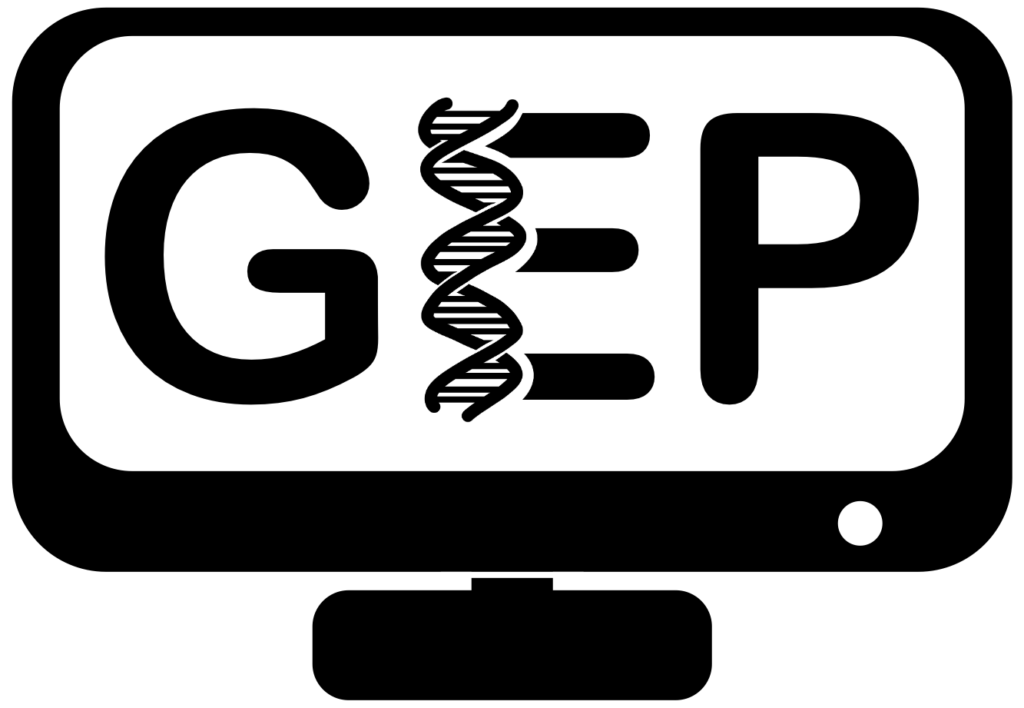Learning Outcomes Framework
These learning outcomes were developed by the Assessment Committee over the last two years and involved referring to core concepts and competencies published by related professional societies (NIBLSE Bioinformatics, GSA) and a review of the GEP’s current and active curriculum. As described below, they are currently organized into two main categories, gene structure & expression and comparative genomics.
We value the individual faculty approaches and all students that make up the GEP and this list is not intended to be prescriptive for any GEP member or match any specific course or other learning experience. Instead, we hope it can serve as a platform to showcase common goals, both within our community and to those interested in it. We also envision it as being useful for identifying curriculum of interest (if linked via tags) and in facilitating the creation of a shared assessment tools database.
I. Gene Structure and Expression
| Students will... | Curriculum/Course-Level Examples |
|---|---|
| A ...describe how exons and introns contribute to a eukaryotic's gene structure and its encoded product(s). | ...distinguish between exons and introns ...identify splice donors and acceptors sites including their position within introns ...state the outcome and potential benefits of alternative splicing |
| B ...recognize that UTRs are part of the transcript but not translated. | ...determine the position of start and stop codons with respect to UTRs. ...interpret which portions of RNA-Seq data are likely to come from coding vs non-coding regions. |
| C ...understand the concept of reading frames within a genomic sequence. | ...show the relationship between DNA nucleotides and encoded amino acids, using one letter codes ...demonstrate familiarity with DNA base and amino acid one letter codes ...explain how use of different reading frames would lead to different translation products ...recognize that a gene's (open) reading frame begins with a start codon and is followed by a stop codon ...discuss how a gene or exon without an open reading frame must be re-evaluated with respect to its definition and/or use |
| D ...describe elements and structures involved in gene regulation. | …draw a simplified diagram of gene order and orientation based on a small genome region using UCSC genome browser …identify positions as upstream or downstream of a reference point ...identify the position of the promoter with respect to a gene region ...recognize how non-coding promoter sequence can still affect gene function ...relate chromatin structure to gene activity |
II. Comparative Genomics
| Students will... | Curriculum/Course-Level Examples |
|---|---|
| A …evaluate sequence alignments. | …evaluate measures of sequence comparison (e.g. e values, total score, similarity, query coverage) as evidence of orthology …Identify the location of a homologous coding sequence within an assembly using BLAST …describe the implications of using BLAST as a local alignment algorithm ...identify conserved sequences within an alignment …interpret a dot plot |
| B …compare and contrast homologous sequences. | …Identify an ortholog of a gene sequence using BLAST …classify homologous genes as orthologs or paralogs …Identify conserved sequences and evaluate how they might affect protein function …interpret amino acid similarity in the context of protein evolution …understand the implications of silent vs non-silent mutations on protein function |
| C …interpret gene prediction data. | ...explain the limitations of ab initio predictors and how manual annotation addresses the limitations ...Interpret the gene prediction tracks of genome browser |
| D …describe chromosomal-scale structure. | …identify positions as upstream or downstream of a reference gene …evaluate synteny of genomic regions …describe genetic events that could lead to chromosomal-scale variation …draw a simplified diagram of gene order and orientation based on a small genome region using UCSC genome browser |
There are a number of topics we have not built into learning outcome framework 1.0, either because we judge them to be advanced skills only encountered by a small fraction of our GEP students or they are not commonly reflected in our current active curriculum. The listing helps us to keep track of these areas for future exploration.
- Transcription start sites (TSS Modules)
- Molecular methodology (genome sequencing methods, RNA-Seq)
- Bioinformatics/computer science approaches
- Ethics
- Re-visit GSA, NIBLSE, and/or other group’s published competencies
- Page Last Updated: August 20, 2025
